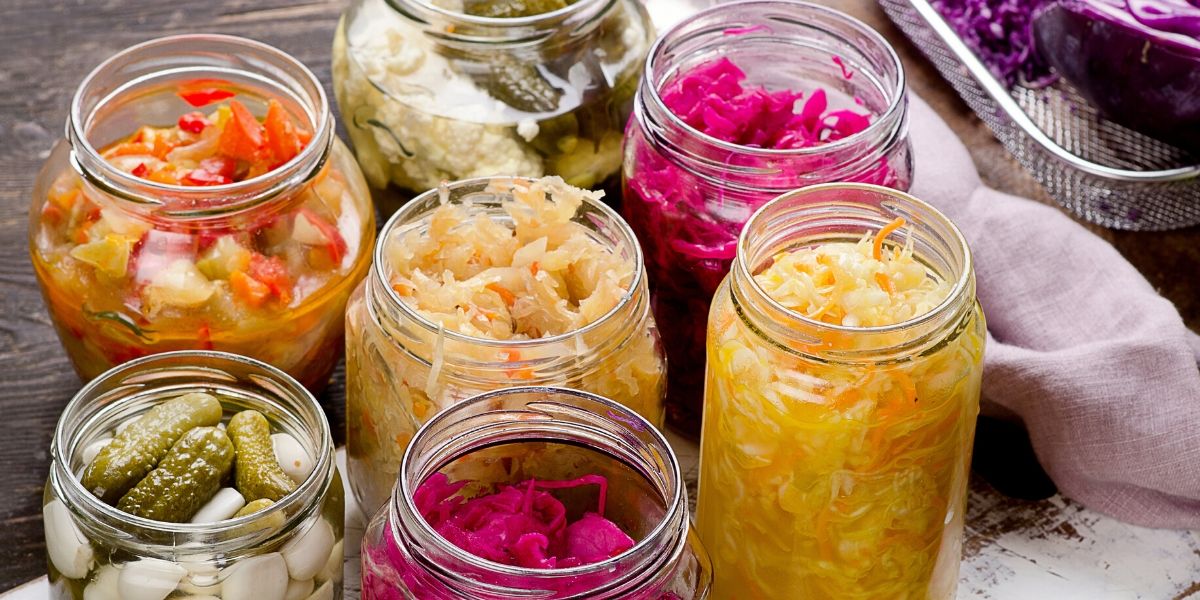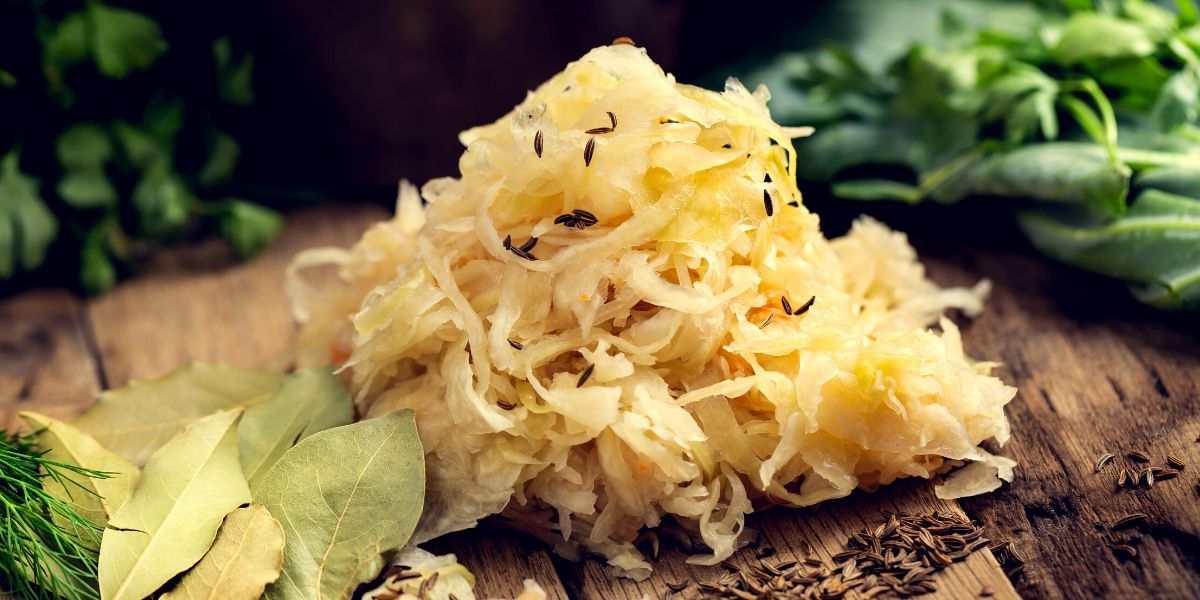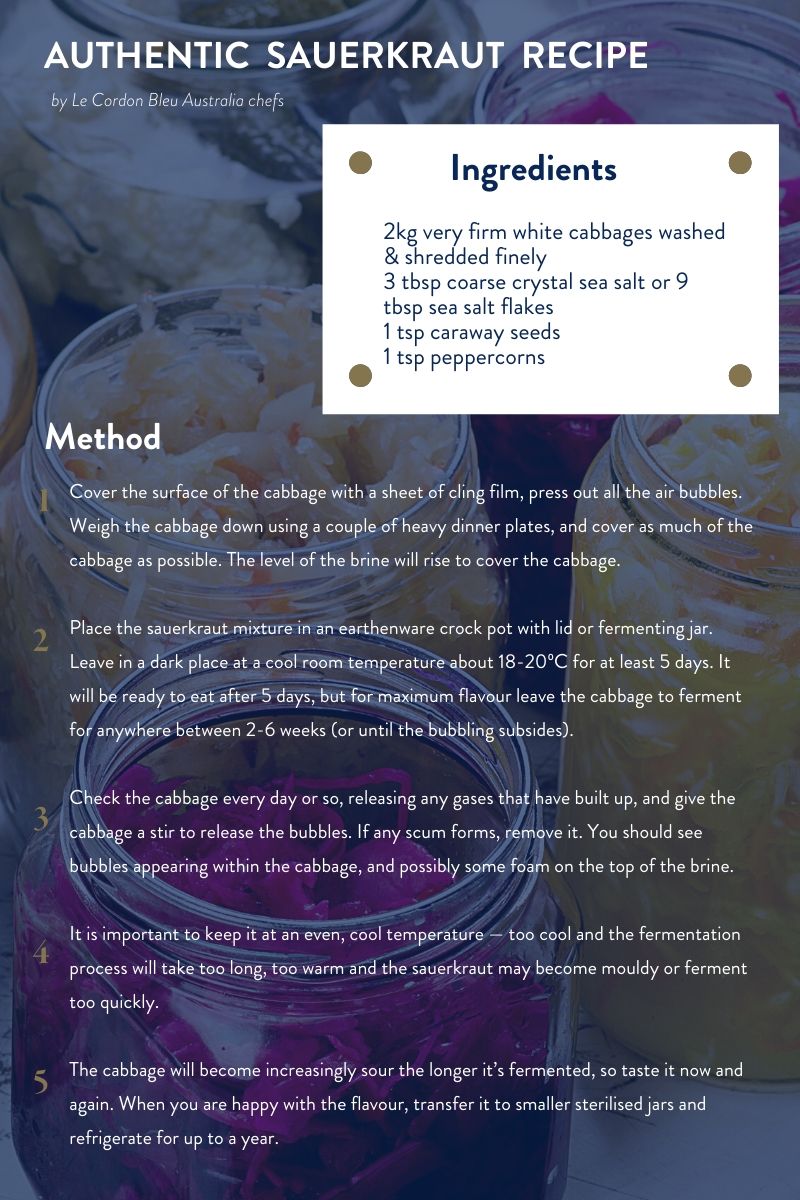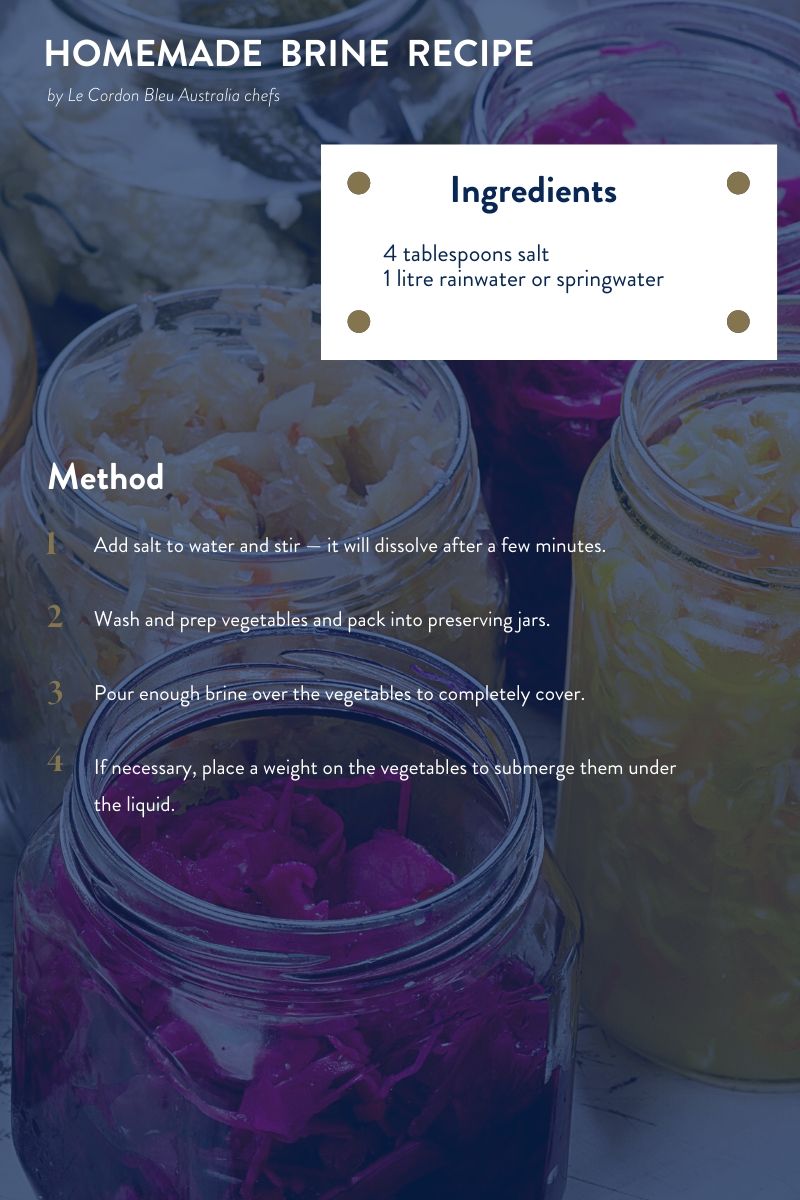-
Locations
Campuses in Europe & Middle EastCampuses in The AmericasCampuses in AsiaLe Cordon Bleu International
- Online Learning
Contact your local representative - Our Story
- Programmes
- Brochures
- News & Events
- Contact
- Find Course
 Make your own fermented foods using our easy guide, complete with an authentic Sauerkrat Recipe by Le Cordon Bleu chefs. Soon you'll be stocking your pantry with homemade kombucha, kefir, tempeh or kimchi - your tastebuds, and your health will thank you!
Make your own fermented foods using our easy guide, complete with an authentic Sauerkrat Recipe by Le Cordon Bleu chefs. Soon you'll be stocking your pantry with homemade kombucha, kefir, tempeh or kimchi - your tastebuds, and your health will thank you!Fermentation is an ancient form of food preservation, and due to a resurgence in popularity has become a key component in many daily diets. With everyone looking to boost their immune systems, fermented foods are an excellent way to enhance wellness and gut health.
During the fermentation process, good bacteria grow. It is known to support our endocrine system, stabilise moods, weight management, cold fighting, build gut flora, help digestion and assist with nutrient absorption. It’s the perfect time to supercharge your health, try our exclusive Sauerkraut (pickled cabbage) recipe below!

Nearly any fruit or vegetable can be pickled, but firm vegetables tend to ferment better. Fresh vegetables more likely to stay crisp throughout the pickling process. Cutting the vegetables into smaller pieces before pickling will also help them to ferment quickly. The most popular pickled vegetables include cucumbers, carrots, radish, capsicum, beetroot, cabbage, garlic, onion or shallots.
Looking to cut down on household waste? Re-using jars is the perfect way to start! As long as they’re properly sterilised and have a water-tight lid, you can use any jars you find around the house.
To sterilise, start by heating the oven to 180ºC. Wash the jars and lids thoroughly in warm, soapy water and wipe the lids with a clean tea towel, leaving them to dry.
Once dry, pop the jars on a tray in the oven for 15 minutes, then remove safely. Once cool, they’re ready to be filled with fermented goodness.
Most pickled vegetables are fermented in a brine made from vinegar and salt. Choose a simple vinegar, like white vinegar or apple cider vinegar, and stay away from anything overpowering like red wine vinegar or balsamic.
To fill a 500ml jar, combine ¾ cup of white wine vinegar with one cup of water and a tablespoon of salt in a saucepan. Bring to the boil and stir until salt is dissolved, then let the brine cool.
Once the veg are prepared and the brine is cooled, it is time to fill the sterile jars. Pack the vegetables tightly and add in extra flavour to taste, like garlic, dill, or other herbs, then pour in the brine.
Seal tightly and shake, leaving to ferment in the refrigerator. The finished pickles can be eaten after just a couple of hours, but full flavour and good-gut-health bacteria will develop after a week.


Copyright © 2025 Le Cordon Bleu International B.V. All Rights Reserved.